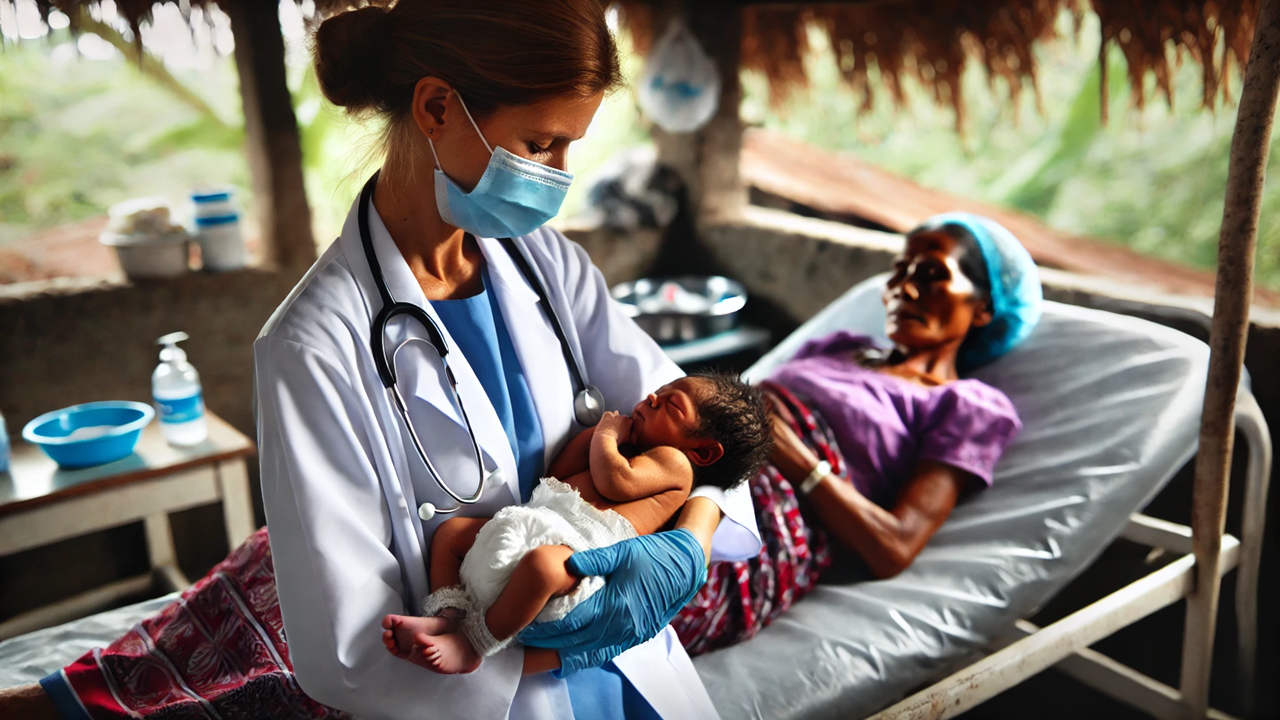Driving Quality Healthcare: A New Toolkit for Monitoring Maternal and Child Health
The "Maternal, Newborn, Child, Adolescent Health and Ageing and Quality of Care Indicator Metadata Toolkit" by the WHO provides a detailed guide for healthcare professionals and policymakers to validate health indicators. This toolkit emphasizes the importance of accurate data in improving healthcare outcomes, particularly in low-resource settings. It includes practical case studies and methods for testing indicators to ensure that healthcare programs are guided by reliable, actionable data.

In the ever-evolving landscape of global health, quality care remains one of the biggest challenges in improving outcomes for mothers, newborns, and children. The "Maternal, Newborn, Child, Adolescent Health and Ageing and Quality of Care Indicator Metadata Toolkit" developed by the World Health Organization (WHO) offers a new, structured approach to validating health indicators. This toolkit focuses on key health outcomes related to maternal, newborn, child, and adolescent health (MNCAH), as well as healthy ageing. By providing clear guidelines on indicator validation, this toolkit is set to revolutionize how health programs worldwide measure and improve quality of care.
The Power of Accurate Health Indicators
Health indicators are crucial in understanding the real impact of healthcare interventions. The toolkit's primary goal is to guide program managers in ensuring that the indicators used to monitor health services are valid, reliable, and reflective of the true quality of care. These indicators can include measurements of service accessibility, patient outcomes, and overall health system efficiency.
The document outlines various methods to validate these indicators, focusing on five key validation techniques: content validity, construct validity, criterion validity, reliability, and responsiveness. By adopting these methods, program managers can ensure that the data they rely on for decision-making are accurate and actionable. For instance, indicators that track maternal mortality rates or newborn health interventions need to be rigorously tested to ensure that they reflect true progress or challenges in healthcare delivery.
Why This Toolkit Matters
The significance of the toolkit lies in its potential to reshape the way healthcare quality is measured, particularly in regions with limited resources. Accurate health indicators not only help in assessing the success of healthcare programs but also enable governments and organizations to allocate resources more effectively. The toolkit emphasizes that poorly validated indicators can result in misguided policy decisions, leading to inefficient use of resources and suboptimal healthcare outcomes.
Moreover, the toolkit is designed to be accessible to a wide range of health stakeholders, from local healthcare providers to global policymakers. It is particularly beneficial for low- and middle-income countries, where data collection resources may be limited, but the need for accurate health information is critical. The toolkit simplifies complex validation processes, making it easier for health officials to implement quality assurance measures without needing extensive technical expertise.
Real-Life Application: Case Studies and Examples
One of the toolkit’s standout features is its inclusion of real-world case studies, which demonstrate the practical application of its validation methods. These case studies cover a broad spectrum of health challenges, including the measurement of maternal and newborn health outcomes, child health indicators, and quality of care in adolescent health programs. By reviewing these examples, health professionals can gain insights into how the toolkit’s validation methods can be applied in their own settings.
For instance, one case study highlights the importance of accurate maternal and newborn health indicators in low-income regions, where access to healthcare services can be limited. In such settings, even small improvements in healthcare delivery can have a significant impact on reducing maternal mortality and improving newborn survival rates. The toolkit provides a structured approach to testing and validating indicators in these environments, ensuring that health data are not only accurate but also useful in guiding future healthcare strategies.
Overcoming Challenges and Limitations
Despite its comprehensive approach, the toolkit also acknowledges the limitations and challenges in validating health indicators. It points out that data variability, especially in resource-constrained settings, can affect the accuracy of health indicators. Different data collection methods, varying health system capacities, and differences in regional healthcare practices can all influence the reliability of indicators.
The toolkit offers recommendations to address these limitations, such as the need for localized validation studies and the importance of ongoing data quality assessments. By identifying and addressing these challenges, the toolkit ensures that health professionals are equipped to continuously improve their healthcare delivery systems.
A Step Towards Better Healthcare for All
The "Maternal, Newborn, Child, Adolescent Health and Ageing and Quality of Care Indicator Metadata Toolkit" stands out as a vital resource for improving global healthcare outcomes. Its focus on indicator validation ensures that healthcare programs, particularly in low- and middle-income countries, can track their progress more accurately and make informed decisions based on reliable data. Ultimately, this toolkit empowers healthcare providers and policymakers to deliver better care, reduce mortality rates, and improve the overall health of vulnerable populations worldwide.
- FIRST PUBLISHED IN:
- Devdiscourse










